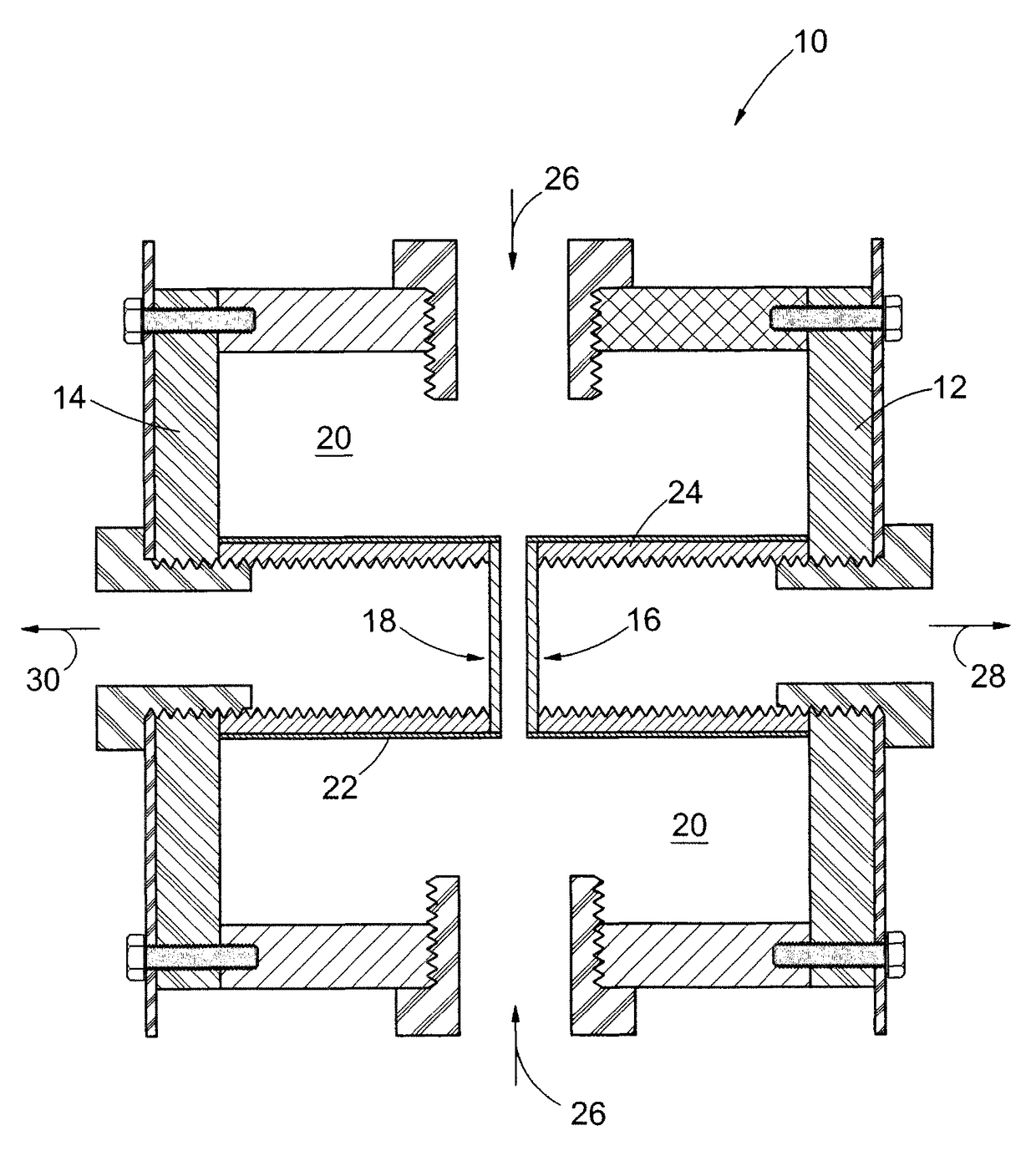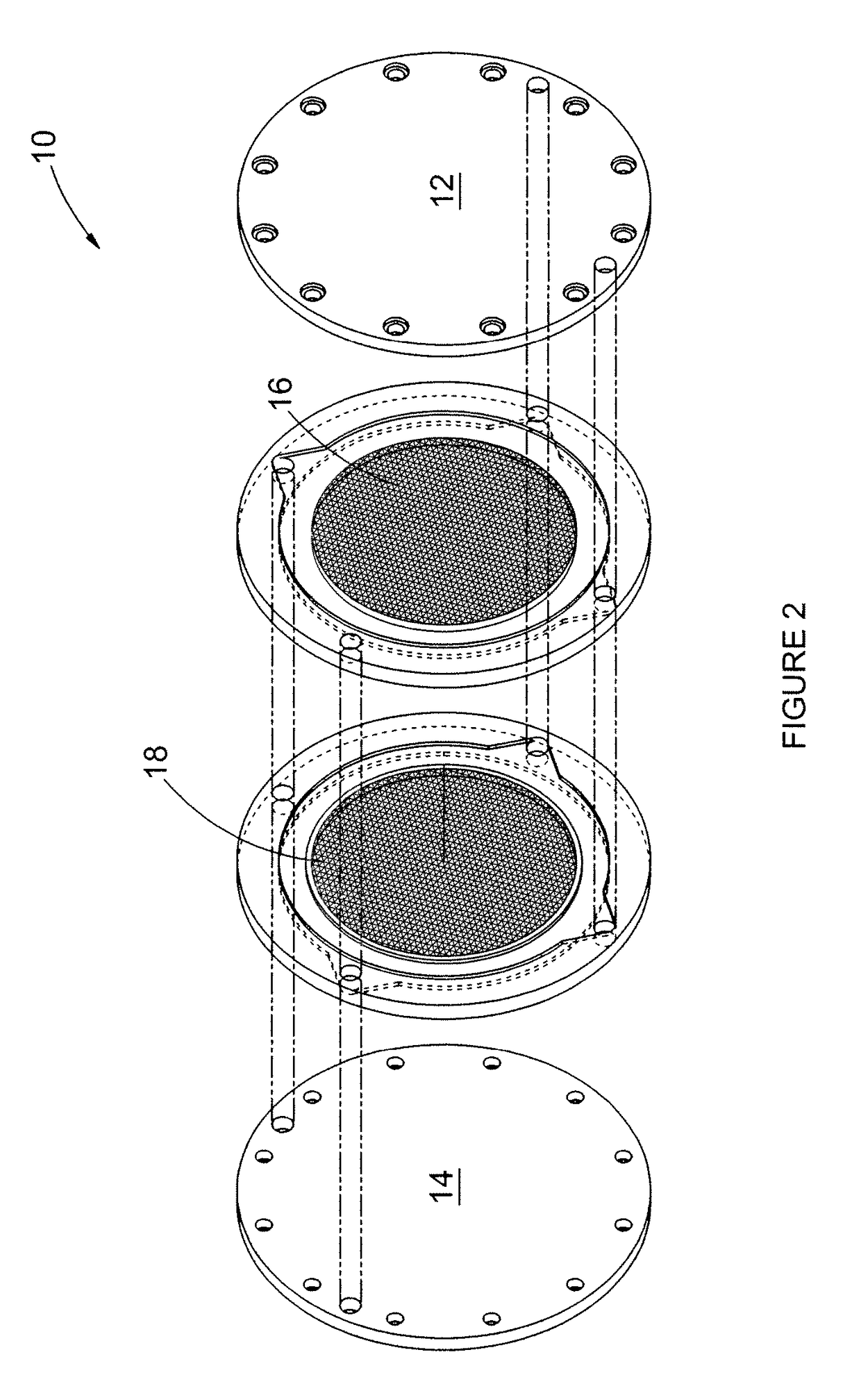Method and apparatus for producing gas
a gas production method and gas technology, applied in the direction of electrolysis process, electrolysis components, cells, etc., can solve the problems of reducing the efficiency of the known proton exchange membrane, and bringing about current flow restriction
- Summary
- Abstract
- Description
- Claims
- Application Information
AI Technical Summary
Benefits of technology
Problems solved by technology
Method used
Image
Examples
Embodiment Construction
[0049]Referring to the drawings, an electrolysis apparatus according to a preferred embodiment of the invention is generally designated by reference numeral 10.
[0050]The electrolysis apparatus 10 is adapted to produce oxygenated and hydrogenated fluid, formed during the electrolysis of an electrolytic solution passed into the apparatus 10.
[0051]The apparatus 10 comprises a first outer end member 12, being of polyethylene, and a second outer end member 14, also being of polyethylene.
[0052]Referring to FIG. 1, the first and second outer end members 12 and 14 are both square shaped and are arranged generally parallel to one another and are spaced from one another. It is foreseen that the apparatus could be multi-agonal or circular in shape and not necessarily be square, such as is shown in FIG. 2.
[0053]The apparatus 10 further includes two spaced apart permeable electrodes, a first permeable electrode 16 and a second permeable electrode 18. The permeable electrode 16 and 18 are each of...
PUM
| Property | Measurement | Unit |
|---|---|---|
| temperatures | aaaaa | aaaaa |
| operating temperature | aaaaa | aaaaa |
| thickness | aaaaa | aaaaa |
Abstract
Description
Claims
Application Information
 Login to View More
Login to View More - R&D
- Intellectual Property
- Life Sciences
- Materials
- Tech Scout
- Unparalleled Data Quality
- Higher Quality Content
- 60% Fewer Hallucinations
Browse by: Latest US Patents, China's latest patents, Technical Efficacy Thesaurus, Application Domain, Technology Topic, Popular Technical Reports.
© 2025 PatSnap. All rights reserved.Legal|Privacy policy|Modern Slavery Act Transparency Statement|Sitemap|About US| Contact US: help@patsnap.com



